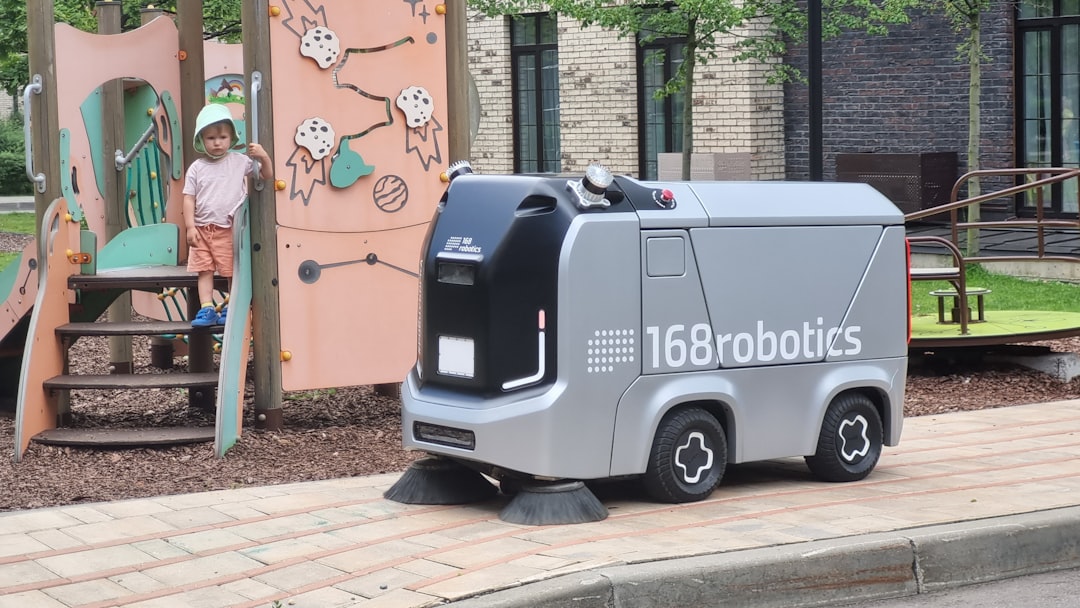The intersection of artificial intelligence (AI) and music has long been a fertile ground for innovation, particularly within the realm of video games. As technology continues to evolve, the integration of KI (Künstliche Intelligenz, or artificial intelligence in German) into music recognition systems is transforming how players experience soundtracks and audio cues. This advancement not only enhances gameplay but also enriches the emotional landscape of gaming, allowing for a more personalized and engaging experience.
The ability of AI to analyze and respond to music in real-time is revolutionizing the way developers approach sound design, creating a dynamic interplay between audio and gameplay that was previously unimaginable. In recent years, the gaming industry has witnessed a surge in the adoption of KI-based music recognition technologies. These systems can identify musical elements, adapt soundtracks based on player actions, and even generate new compositions on the fly.
This capability opens up a myriad of possibilities for game developers, enabling them to craft experiences that resonate deeply with players. As we delve deeper into this topic, we will explore how these systems work, their benefits, and their potential to shape the future of video game design.
Key Takeaways
- KI-based music recognition in video games enhances the overall gaming experience by providing dynamic and reactive soundtracks.
- KI systems analyze music in video games by identifying key elements such as tempo, mood, and intensity to create a personalized and immersive experience for players.
- The reactivity of KI-based music in video games allows for seamless transitions and real-time adjustments, enhancing the emotional impact of gameplay.
- Automatic mood adjustment in video game music, driven by KI-based recognition, ensures that the soundtrack aligns with the changing dynamics of the game, creating a more engaging experience for players.
- Successful implementation of KI-based music recognition in video games has led to more immersive and emotionally impactful gaming experiences, setting the stage for future developments and potential applications in game design.
How KI Systems Analyze Music in Video Games
At the core of KI-based music recognition lies sophisticated algorithms that can dissect and interpret musical compositions. These systems utilize machine learning techniques to analyze various components of music, such as melody, harmony, rhythm, and timbre. By training on vast datasets of musical pieces, these AI models learn to recognize patterns and features that define different genres and styles.
This analytical prowess allows them to identify specific tracks or even individual elements within a piece of music, enabling real-time interaction with the gameplay. The process begins with audio input, which is transformed into a digital format that the AI can process. Once the music is digitized, the system employs techniques like spectral analysis and feature extraction to break down the audio into its constituent parts.
This analysis can reveal not only the notes being played but also the emotional tone conveyed by the music. By understanding these nuances, KI systems can respond appropriately to in-game events, adjusting the soundtrack to enhance the player’s experience. This level of analysis is not just limited to pre-recorded tracks; it can also extend to dynamically generated music, allowing for an ever-evolving auditory landscape.
The Benefits of Reactivity in Music for Video Games

One of the most significant advantages of integrating KI-based music recognition into video games is the reactivity it brings to sound design. Traditional soundtracks often follow a linear path, where players experience music in a predetermined sequence. However, with AI-driven systems, music can adapt in real-time based on player actions or game events.
For instance, in an action-adventure game, the intensity of the music might escalate as players engage in combat or explore dangerous environments.
This dynamic approach not only enhances gameplay but also deepens emotional engagement, as players become more attuned to the game’s atmosphere. The ability for music to react to gameplay elements fosters a sense of agency and involvement that traditional soundtracks simply cannot achieve.
Automatic Mood Adjustment in Video Game Music
Another remarkable feature of KI-based music recognition is its capacity for automatic mood adjustment. By analyzing gameplay data and player behavior, these systems can modify the musical score to align with the emotional state of the game or even the player themselves. For example, if a player is struggling with a challenging level, the AI might introduce uplifting melodies or motivational themes to encourage perseverance.
Conversely, if a player is cruising through an easy section, the music could shift to more subdued tones to reflect that ease. This automatic mood adjustment not only enhances player experience but also serves as a powerful storytelling tool. Music has long been recognized as a key element in narrative development; when it adapts to reflect the unfolding story or player emotions, it creates a richer narrative tapestry.
Players are more likely to feel invested in their journey when the music resonates with their experiences, leading to memorable moments that linger long after the game is over.
Creating Immersive Experiences with KI-based Music Recognition
The potential for creating immersive experiences through KI-based music recognition is vast and exciting. By leveraging AI’s ability to analyze and adapt music in real-time, developers can craft environments that feel alive and responsive. Imagine exploring a vast open world where every step you take influences the soundtrack—each location has its unique musical identity that evolves based on your actions and decisions.
This level of immersion can be particularly impactful in role-playing games (RPGs), where players often invest significant time in character development and story progression. With KI-driven music recognition, soundtracks can reflect not only the overarching narrative but also individual character arcs and player choices. As players navigate through quests and challenges, they are enveloped in an auditory experience that mirrors their journey, enhancing emotional investment and overall enjoyment.
Case Studies: Successful Implementation of KI-based Music Recognition in Video Games

Several notable case studies illustrate the successful implementation of KI-based music recognition in video games. One prominent example is “No Man’s Sky,” an exploration-focused game that utilizes procedural generation for both its environments and its soundtrack. The game’s AI analyzes player movements and actions to create an adaptive musical score that complements the vastness of space exploration.
As players traverse different planets and encounter various challenges, the music shifts seamlessly to match their experiences, creating an engaging auditory backdrop. Another example is “Ghost of Tsushima,” which employs dynamic music systems that respond to gameplay events. The game’s score evolves based on player actions—intense combat sequences are accompanied by powerful orchestral arrangements, while moments of exploration feature serene melodies inspired by traditional Japanese music.
This integration not only enhances immersion but also reinforces cultural authenticity within the game’s setting.
Future Developments and Potential Applications of KI-based Music Recognition in Video Games
Looking ahead, the future of KI-based music recognition in video games holds immense promise. As technology continues to advance, we can expect even more sophisticated algorithms capable of deeper analysis and more nuanced responses to player behavior. The potential applications are vast; for instance, future games may incorporate personalized soundtracks that adapt not only to gameplay but also to individual player preferences and emotional states.
Moreover, as virtual reality (VR) and augmented reality (AR) technologies gain traction, KI-driven music recognition could play a pivotal role in creating fully immersive experiences. Imagine stepping into a virtual world where every action you take influences not just visuals but also soundscapes tailored specifically for you. This level of interactivity could redefine how players engage with games, making each experience unique and deeply personal.
The Impact of KI-based Music Recognition on the Future of Video Game Design
In conclusion, KI-based music recognition is poised to have a profound impact on the future of video game design. By enabling real-time analysis and adaptation of soundtracks, these systems create immersive experiences that resonate with players on multiple levels. The ability for music to react dynamically to gameplay not only enhances engagement but also enriches storytelling and emotional connection.
As developers continue to explore the possibilities offered by AI-driven technologies, we can anticipate a new era of gaming where sound design becomes an integral part of gameplay mechanics rather than a mere accompaniment. The fusion of technology and creativity will undoubtedly lead to innovative projects that push the boundaries of what is possible in interactive entertainment. As we embrace this exciting frontier, one thing is clear: KI-based music recognition will play a pivotal role in shaping the future landscape of video games.
Entdecken Sie, wie KI-Systeme die Musikerkennung in Videospielen revolutionieren, indem sie die Hintergrundmusik und Soundeffekte dynamisch anpassen. Diese Technologie ermöglicht eine reaktionsschnelle Musikgestaltung, die sich automatisch der Stimmung des Spiels anpasst und so ein immersives Spielerlebnis schafft. Für weitere Einblicke in die fortschrittlichen Technologien, die das digitale Erlebnis prägen, lesen Sie den Artikel „Exploring the Metaverse: A New Frontier in Digital Reality“, der sich mit den neuesten Entwicklungen im Bereich der digitalen Realität befasst.
FAQs
What is KI-basierte Musikerkennung in Videospielen?
KI-basierte Musikerkennung in Videospielen refers to the use of artificial intelligence (AI) systems to analyze music within video games. These AI systems can dynamically adjust background music and sound effects based on the gameplay, creating a more immersive and responsive gaming experience.
How do AI systems analyze music in video games?
AI systems use advanced algorithms to analyze the music within video games. They can identify elements such as tempo, rhythm, melody, and mood, allowing them to dynamically adjust the music and sound effects to match the gameplay.
What are the applications of KI-basierte Musikerkennung in video games?
Some applications of KI-basierte Musikerkennung in video games include creating reaktionsschnelle Musik (responsive music) that changes based on the player’s actions, automatically adjusting the mood of the music to match the gameplay, and creating a more immersive gaming experience through dynamic music and sound effects.
How does KI-basierte Musikerkennung enhance the gaming experience?
By dynamically adjusting the background music and sound effects, KI-basierte Musikerkennung can create a more immersive and responsive gaming experience. This can enhance the player’s emotional engagement with the game and create a more dynamic and interactive gameplay environment.











Leave a Reply